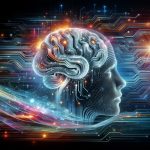The creation of photorealistic portrait animation is driven by the integration of audio input with static images, employing advanced diffusion models and transformer-based technologies. Tencent’s AniPortrait exemplifies the fusion of these technologies, setting a new benchmark for generating animated portraits that exhibit lifelike facial expressions and head movements. It proves especially beneficial in virtual reality, gaming, and digital media, impacting the arena of personalized content and user experiences.
Previously, the production of high-fidelity video animations struggled due to limitations in generalization capabilities and stability of content generation networks. Traditional methods, which involved networks like GANs and NeRF, often fell short when tasked with maintaining visual and temporal consistency. The industry sought advancements that could accurately coordinate lip synchronization, facial expressions, and head positioning, rendering animations that are visually appealing and convincing.
What Makes AniPortrait Unique?
AniPortrait distinguishes itself through a two-stage process that harnesses transformer models to interpret audio inputs into 3D facial meshes, followed by a robust diffusion model that translates these into high-caliber, temporally stable animations. This framework’s excellence lies in generating animations that are not only visually striking but also capture the natural nuances of facial expressions.
How Does AniPortrait Function?
The framework is composed of two modules: Audio2Lmk and Lmk2Video. Audio2Lmk employs pre-trained wav2vec models for feature extraction from audio, demonstrating remarkable generalization in detecting nuances of speech. Lmk2Video, drawing inspiration from AnimateAnyone and using SD1.5 as its backbone, integrates these features into a cohesive animation. The synergy between these modules underlines the efficacy of AniPortrait in producing animations that are rich in detail and continuity.
What are the Technical Insights?
Technically, AniPortrait’s Lmk2Video module incorporates a temporal motion module that ensures the temporal consistency of the animations. ReferenceNet, mirroring SD1.5’s architecture, extracts appearance details from static images, integrating them to enhance the animation’s realism. The model training employs 4 A100 GPUs over a span of two days for each phase, using the AdamW optimizer with a learning rate of 1e-5, demonstrating the considerable computational resources and refinement involved.
In a recent scientific paper titled “Audio-Driven Facial Animation by Joint End-to-End Learning of Pose and Emotion” published in the ACM Transactions on Graphics, researchers delve into a similar topic. They examine the possibilities of deriving facial animations directly from audio cues, focusing on capturing both the emotional context and head movements. The findings of this study correlate with the goals of AniPortrait, further emphasizing the potential of audio-driven technologies in advancing facial animation techniques.
Despite the strides made by AniPortrait in the realm of portrait animation, challenges remain. Acquiring large-scale, high-quality 3D data is an expensive endeavor, and the animations produced are not immune to the uncanny valley effect. As the research community continues to push for the direct prediction of portrait videos from audio, there looms a promise of more astonishing generative results, potentially eliminating existing barriers and revolutionizing the field.
Photorealistic portrait animation stands on the cusp of a transformative era, where technologies like AniPortrait pave the way for immersive and personalized digital experiences. As these advancements progress, they will undoubtedly shape the future of content creation, storytelling, and the interactive media landscape.










